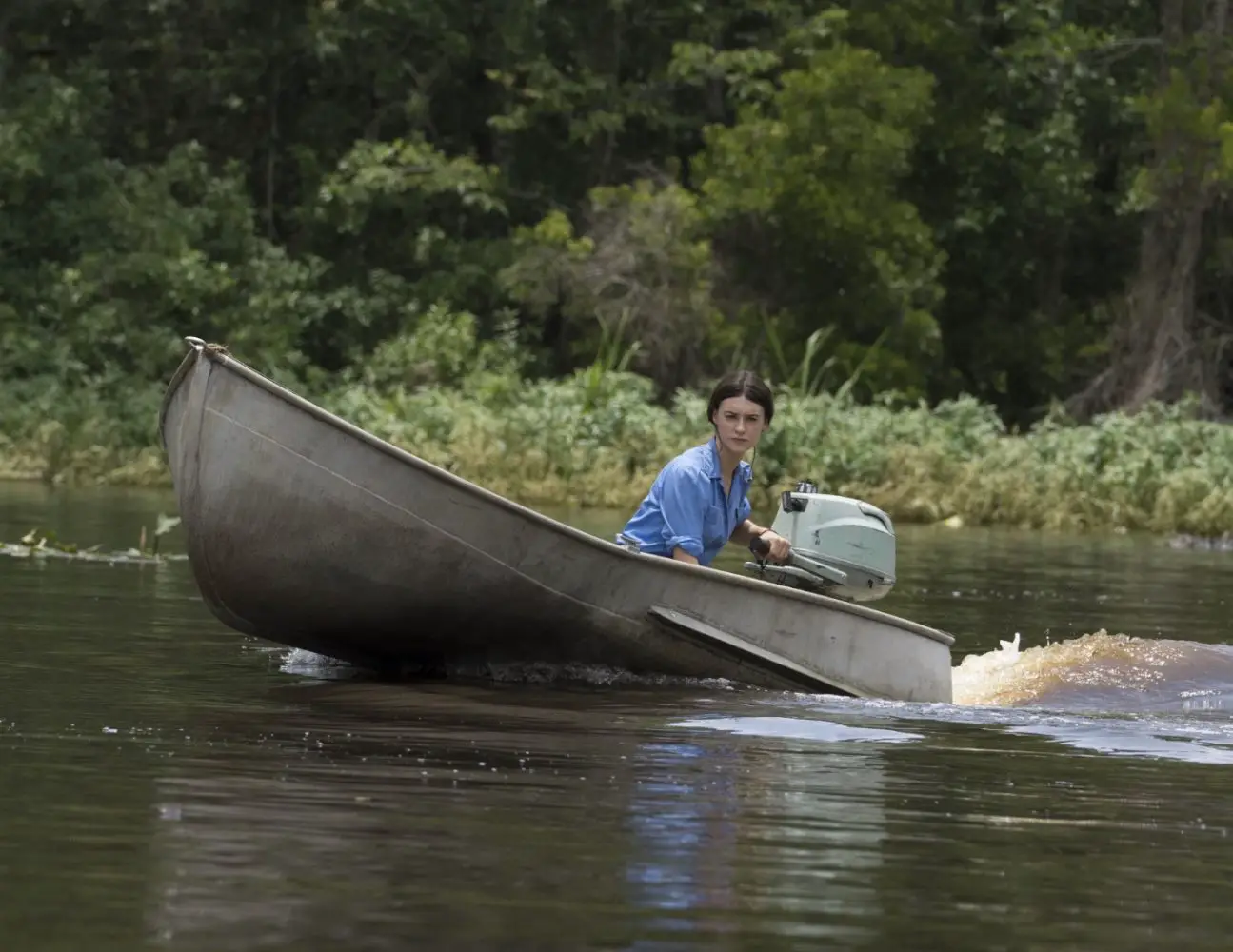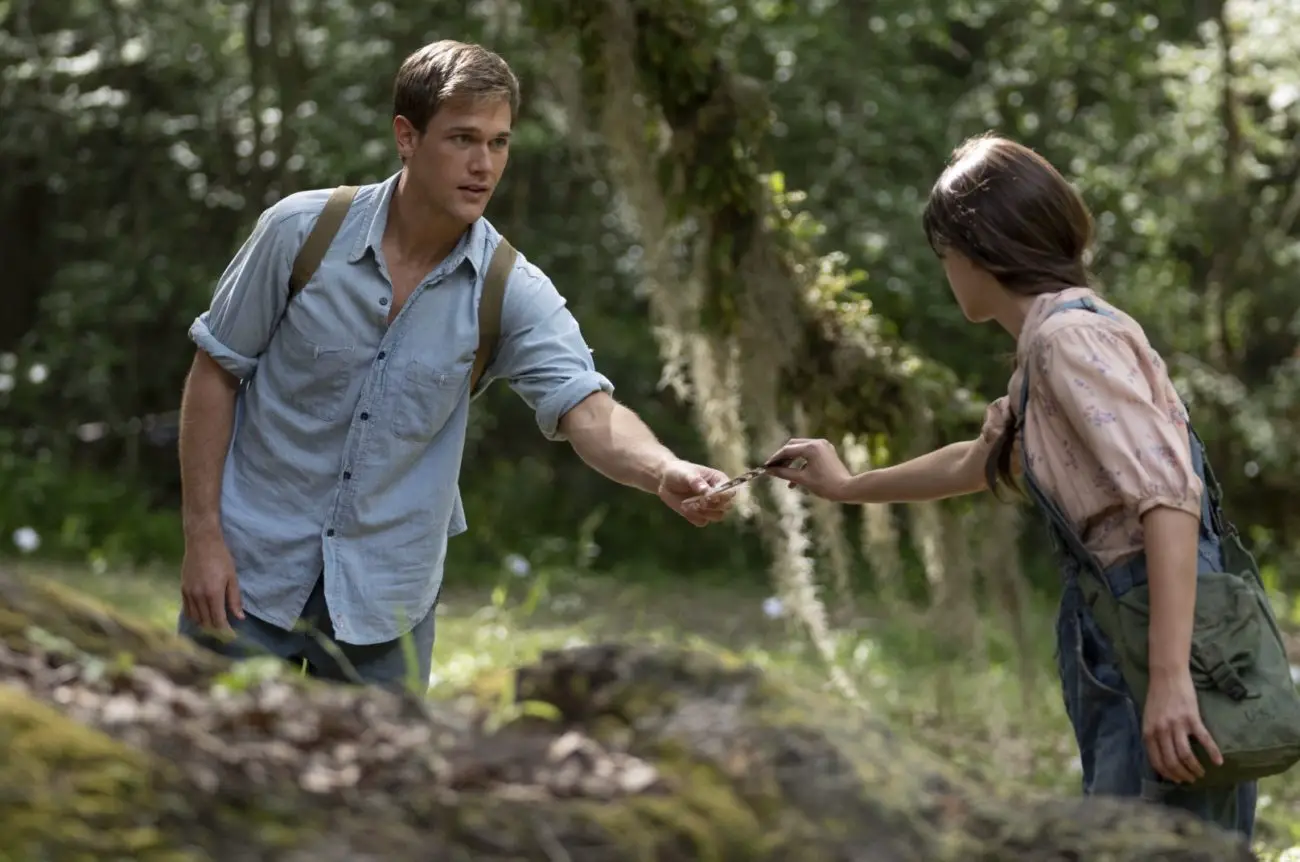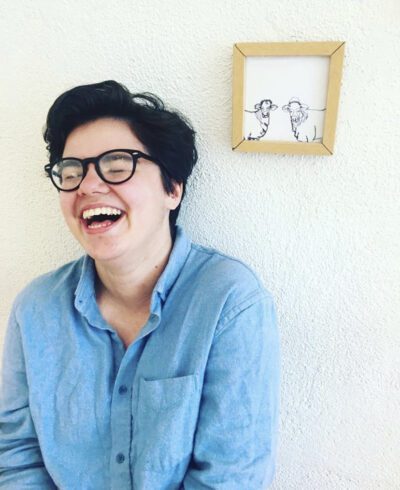The more-than-competent Daisy Edgar-Jones leads the book-to-film adaptation of Where the Crawdads Sing as Catherine “Kya” Clark. Kya lives alone in the marshlands outside the fictional North Carolina town of Barkley Cove. The film weaves two timelines together while keeping the focus on Kya.
It’s 1969 and Kya is on trial for the murder of hometown hero Chase Andrews (Harris Dickinson). He was the handsome, beloved high school quarterback from a prominent family. Chase was found dead in the marsh and police accuse Kya of committing the crime, despite the fact that they have no concrete evidence. She’s the focus of the town’s vitriol simply because she lives alone in the swamp. Tom (David Strathairn), a retired lawyer, believes Kya is innocent and offers to act as her lawyer, free of charge.
The movie travels back in time to 1952, when Kya is six years old. She grew up with an abusive father, Pa (Garret Dillahunt), a loving mother (Ahna O’Reilly), and four siblings (Will Bundon, Adeleine Whittle, Emma Kathryn Coleman, and Toby Nichols). Everyone in her family left young Kya to escape Pa. Even Pa eventually left her behind and Kya was forced to fend for herself in the marsh. She doesn’t attend school because the town kids bully her, so she doesn’t learn how to read until a boy her age, Tate Walker (Taylor John Smith), offers to help.

It’s difficult to talk about Where the Crawdads Sing without mentioning the setting of the marsh outside of Barkley Cove. The marsh is home to Kya. It’s a place where everything makes sense and where she finds immense beauty in the natural environment. The sheer delight Kya shows when she finds new feathers and shells comes from a genuine appreciation of the natural world. A gifted painter, she’s encouraged by Tate to send her watercolors of marsh wildlife to publishers. Most people don’t look at marshes and find beauty in the same way Kya does, so there is a burden on the filmmakers to create that same appreciation in the audience. It’s difficult but necessary, and was not achieved in the film’s runtime.
Part of the film’s lack of believability lies in the costuming. Instead of being drenched in sweat and covered in scrapes and bruises, everyone in the film looks like they belong in an ad for The Gap. Kya lives exclusively in the marsh and earns money by harvesting mussels from the swampland, yet she looks as if she hasn’t had to work a day in her life. Where the Crawdads Sing can’t have it both ways. The film can’t be both a Nicholas Sparks-esque romance and a story of survival in the wilderness. Kya is made fun of throughout the film for being “the marsh girl,” but she doesn’t look any different from the folks in town. When Kya’s a child, the film makes a moderate effort to show her as “different,” but when the full burden of her livelihood falls on her own survival skills, she’s clean as a whistle. The obvious reason for this is so that she can be seen as romantically desirable to Chase and Tate.

Where the Crawdads Sing leaves no room for interpretation. The movie over-relies on telling rather than showing, despite Edgar-Jones’ incredible talent for nuanced acting. Much of the film is bogged down by narration. At first, the voiceover acts as Kya’s means of opening up to her lawyer, Tom, about her past. As the movie goes on, however, it loses sight of the purpose of the narration. It becomes a lazy way to allow the plot to trudge on with flowery, out-of-place writing.
This film is the sort of glossy beach read that lacks anything meaningful to contribute, even though it thinks it has something vital and smart to say about prejudice. In reality, the film is a melodrama that beats the audience over the head with the emotions it wants to portray. The script relies on generalizations for the characters, making them painfully hollow. This is especially noticeable in Jumpin’ (Sterling Macer) and Mabel (Michael Hyatt), the film’s only two Black characters, who only exist to help the pretty White marsh girl. Even the twist at the end of the movie lacks any real depth. It’s a twist that aches to hit the same poignant note as Gone Girl, but Where the Crawdads Sing offers nothing thought-provoking.
There’s also a controversy swirling around the author of the book, Delia Owens. Like Kya, Owens has a love for nature. It led her to Zambia in the ’90s, where she is still wanted for questioning in a 1995 murder case. It’s fairly difficult to divorce the onscreen murder trial from the very real unsolved trial involving the book’s author.
Try as it might, Where the Crawdads Sing amounts to nothing more than a shallow tale of otherness told through the lens of the prettiest, cleanest marsh girl you’ve ever seen.




